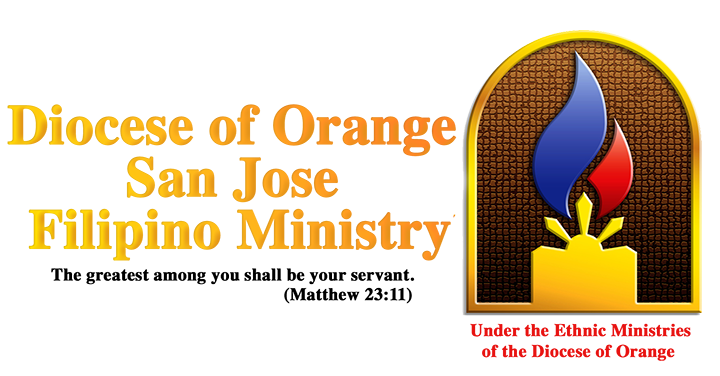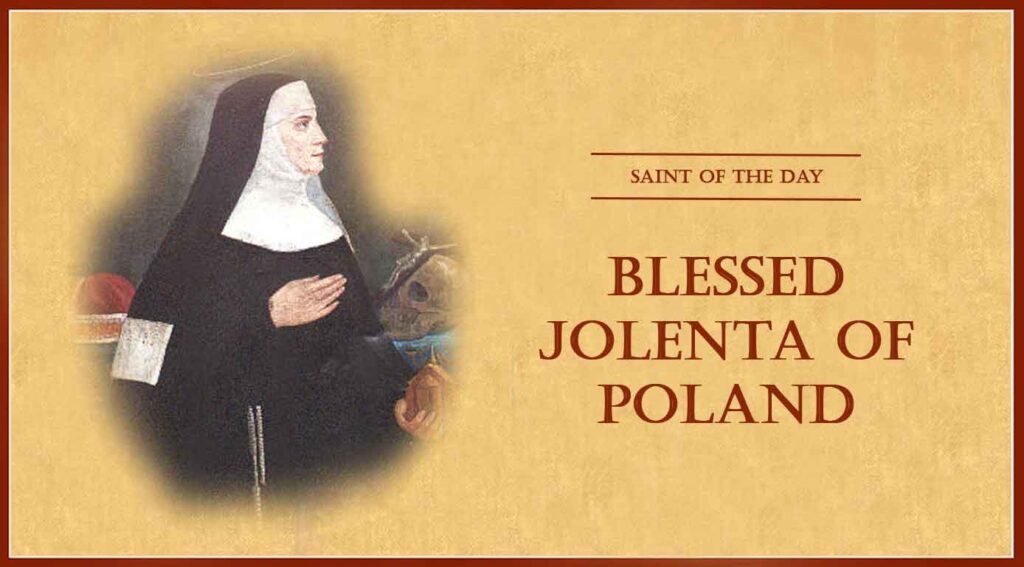1850–1917; Patron Saint of immigrants, emigrants, hospital administrators, and orphans; Invoked against malaria; Canonized by Pope Pius XII on July 7, 1946
Maria Francesca Cabrini (Frances) was born in the small town of Sant’Angelo Lodigiano, Lombardy, modern-day Italy. At the time of her birth, this culturally Italian town was under the control of the Austrian Empire. She was the youngest of thirteen children, only four of whom survived to maturity. As a child, she listened attentively as her father inspired her with stories about foreign missionaries. Her parents were quite devout and formed their children well in the Catholic faith. Following the example of her mother and older sister Rosa, Frances learned to pray at an early age and grew in devotion to the Sacred Heart of Jesus, especially after Pope Pius IX extended the Feast of the Sacred Heart to the Universal Church when she was six years old. Around the age of eight, Frances received the Sacrament of Confirmation and later remarked of that day, “from that moment I was no longer of the earth.” She sensed she was deeply united with the Holy Spirit.
At the age of thirteen, Frances attended school at the convent of the Daughters of the Sacred Heart in a neighboring town. While with them, her love for the Sacred Heart grew. She wanted to join the sisters and enter the convent, but the mother superior turned her down because she suffered from poor health. After five years of schooling, she graduated with honors, received a teaching certificate, and returned to her hometown to teach in the parish school. Shortly afterward, she transferred to the parish school in the neighboring town of Vidardo. After two years of teaching, when she was twenty, her parents died just months apart. Soon afterward, she suffered through smallpox. When Frances recovered, she took it as a sign that God wanted something more from her, so she applied for acceptance to the Canossian Sisters of Crema, about forty miles away, but was yet again turned away.
In 1874, when Frances was twenty-four years old, the bishop invited her to assist at the House of Providence orphanage for girls about twenty miles away in Codogno. The bishop wanted the orphanage to be run as religious sisters would run it, and he believed Frances could help the two older women who were poorly operating the facility. Frances soon found that some of the girls in the orphanage were also interested in religious life, so in 1877, at the age of twenty-seven, Frances and five of the girls made a religious profession of vows at the hands of the bishop. Frances added Xavier to her name in honor of the great Jesuit missionary Saint Francis Xavier, and the bishop named her as the mother superior. Within three years, Mother Frances Xavier Cabrini’s attempt at religious life in the House of Providence suffered, due to calumnies from the other two women. Mindful of this, in 1880, at the age of thirty, the bishop invited Mother Cabrini and the girls who professed with her to form a new missionary convent in Codogno, which eventually became the Institute of the Missionary Sisters of the Sacred Heart of Jesus. Mother Cabrini remained mother superior for the next thirty-seven years until her death.
Mother Cabrini was humble and prayerful, but also determined, hardworking, well organized, and zealous. She quickly arranged the new convent, despite arriving with very little means. An altar was set up in the chapel with an image of the Sacred Heart, which became the source of meditation and prayer for the young sisters. During the first several years after the order’s founding, the Missionary Sisters of the Sacred Heart experienced rapid growth, with many girls joining. Within a year, an orphanage and day school were established next to the convent. Within two years, another convent was established, and within five years there were seven convents. The sisters made needlework and embroidery to support their work.
In September 1887, with the permission of her bishop, Mother Cabrini set out for Rome with the hope of founding a convent in the Eternal City and to request the Holy Father’s final approval of her institute. Despite some difficulties in dealing with the Roman Curia, in March 1888, Pope Leo XIII approved her rule and constitutions, and the sisters were invited to establish houses in Rome. Now that they were an institute approved by the pope, they were free to travel wherever the pope would send them. While in Rome, Mother Cabrini met Bishop Scalabrini of the Diocese of Piacenza, who encouraged her to found a convent in the United States to care for the destitute Italian immigrants. Mother Cabrini, however, had her heart set on China, just as her patron saint, Saint Francis Xavier, had done. In the meantime, Bishop Scalabrini sent a letter to the Archbishop Corrigan of New York who replied that he would welcome the sisters. Mother Cabrini decided to ask the Holy Father himself. At an audience, she told the Holy Father of her desire to establish a mission in China. The Holy Father quickly said to her, “You will go not to the East, but to the West!” The matter was settled and almost immediately, Mother Cabrini and her sisters set out by ship to the United States. Though this was a new and unexpected challenge, contrary to her initial desire, she would often remind herself, “I can do all things in Christ Who strengthens me” (Philippians 4:13).
Mother Cabrini and six sisters arrived in New York on March 31, 1889. Upon arrival, the archbishop was surprised they had arrived so soon. The convent wasn’t prepared for them, so he urged them to return to Italy for the time being. Mother Cabrini refused, stating that she was sent by the pope and had to obey him. Without a convent ready, the sisters found hospitality with the Sisters of Charity. Shortly afterward, Mother Cabrini lovingly persuaded the archbishop to permit her and her sisters to move into the convent. He agreed, and the sisters began their work in the poor Italian section of Manhattan. They established a free school, taught in the local parish, and founded an orphanage, which soon had hundreds of children for whom the sisters would beg for alms. Many young Italian girls also joined in the work with the sisters.
Once everything was in working order, Mother Cabrini returned to Italy with some of the postulants who had joined them in America so they could enter the novitiate at the mother house in Codogno. After visiting all of her houses in Italy and with Pope Leo XIII to update him and receive his encouraging blessing, Mother Cabrini returned to the United States in April 1890 with seven more sisters. After founding a new convent and orphanage in West Park, which a year later would also become a novitiate for North America, Mother Cabrini returned to Italy once again to visit all her convents.
Over the next twenty-seven years, Mother Cabrini sailed across the ocean about twenty-three more times, founding over sixty hospitals, orphanages, schools, and convents in New Orleans, Brooklyn, Denver, Newark, Philadelphia, Scranton, Chicago, Seattle, Los Angeles, Argentina, Brazil, Nicaragua, England, France and Spain. During her time at sea, she became accustomed to writing letters to her sisters, amounting to thousands of letters that well document her travels and work. She was a tireless foundress who was directed and empowered by the Holy Spirit. She was compassionate and humble, learning from her continuous meditation on the Sacred Heart. She was an inspiration to all, drawing more than 1,000 young girls to join her mission in her lifetime. Nine years after her death, her sisters established their first home in China, no doubt due to her intercession. In 1946, she became the first United States citizen to be canonized.
Saint Frances Xavier Cabrini knew from an early age that God was calling her to serve Him as a religious sister, but she had no idea what abundant fruit her life would produce. She worked one day at a time, fulfilling the will of God each moment, continually entering into the humility, suffering, compassion, and mercy of Jesus’ Sacred Heart. In His Heart she discovered His love for the poor, sick, abandoned, and destitute, and she ministered to them from His Heart, being His mercy for all.
Honor this holy foundress by honoring the Sacred Heart of Jesus. This devotion is especially relevant for those who suffer. Ponder Jesus’ wounded Heart and the love that pours forth from that wound, and you will become a recipient of the mercy Mother Cabrini discovered and shared.
Source: https://mycatholic.life/saints/saints-of-the-liturgical-year/november-13—saint-frances-xavier-cabrini-virgin—usa-memorial/








